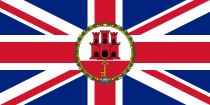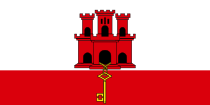Prince Edward, Duke of Kent and Strathearn
| Prince Edward | |
|---|---|
| Duke of Kent and Strathearn | |
 |
|
|
|
|
| Reign | 23 April 1799 – 23 January 1820 (20 years, 275 days) |
| Spouse | Princess Victoria of Saxe-Coburg-Saalfeld |
| Issue | |
| Victoria of the United Kingdom | |
| Full name | |
| Edward Augustus | |
| House | House of Hanover |
| Father | George III of the United Kingdom |
| Mother | Charlotte of Mecklenburg-Strelitz |
| Born | 2 November 1767 Buckingham Palace, London |
| Died | 23 January 1820 (aged 52) Woodbrook Cottage, Sidmouth, Devon |
| Burial | St. George's Chapel, Windsor |
The Prince Edward, Duke of Kent and Strathearn (Edward Augustus; 2 November 1767 – 23 January 1820) was a member of the British Royal Family, the fourth son of King George III and the father of Queen Victoria. He was created Duke of Kent and Strathearn and Earl of Dublin on 23 April 1799, the same year he became commander-in-chief in North America.
Contents |
Early life
Prince Edward was born on the 2 November 1767.[1] His father was the reigning British monarch, George III, the eldest son of The Prince Frederick, Prince of Wales and Augusta of Saxe-Gotha. His mother was Queen Charlotte (née Duchess Charlotte of Mecklenburg-Strelitz), the daughter of Duke Charles Louis Frederick of Mecklenburg-Strelitz. As a son of the British monarch, he was styled His Royal Highness The Prince Edward from birth, and was fourth in the line of succession to the throne. He was named after his paternal uncle the Duke of York and Albany, who had died several weeks earlier and was buried at Westminster Abbey the day before his birth.
Prince Edward was baptised on 30 November 1767; his godparents were The Hereditary Prince of Brunswick-Lüneburg (his paternal uncle by marriage, for whom The Earl of Hertford, Lord Chamberlain, stood proxy), Duke Charles of Mecklenburg-Strelitz (his maternal uncle, for whom The Earl of Huntingdon, Groom of the Stole, stood proxy), The Hereditary Princess of Brunswick-Wolfenbüttel (his paternal aunt, who was represented by a proxy) and The Landgravine of Hesse-Kassel (or Hesse-Cassel; his twice-paternal great-aunt, for whom The Duchess of Argyll, Lady of the Bedchamber to The Queen, stood proxy).
Army
In 1785, he began his military training in Germany.[1] King George III intended to send him to the University of Göttingen, but decided against it upon the advice of the Duke of York. Instead, Prince Edward went to Lüneburg[1] and later Hanover, accompanied by his tutor, Baron Wangenheim.[1] During 1788 to 1789 he completed his education in Geneva.[1]
In 1789 he was appointed colonel of the 7th Royal Fusiliers.[1] In 1790 he returned home without leave and, in disgrace, was sent off to Gibraltar as an ordinary officer.[1]
He was ordered to Canada in 1791.[1] The prince was promoted to the rank of major-general in October 1793[1] and lieutenant-general in January 1796.[1] On 24 April 1799[2], he was created Duke of Kent and Strathearn and Earl of Dublin, and was later, in May, promoted to the rank of general and appointed the Commander-in-Chief, North America.[1] For most of this period he lived in Halifax, Nova Scotia[1] and was instrumental in shaping that port's military defences for protecting the important Royal Navy base, as well as influencing the city's and colony's socio-political and economic institutions. Canadian Monarchists consider him to be the founder of the Canadian Royal Family.
On 24 May 1802, the Duke began an appointment as Governor of Gibraltar, with express orders by the government to restore discipline among the troops.[1] However, the Duke's harsh discipline precipitated a mutiny by soldiers in the Royal Fusiliers and the 25th Regiment on Christmas Eve 1802.[1] The Duke of York, then Commander-in-Chief of the Forces, recalled him in May 1803 after receiving reports of the mutiny.[1] The Duke refused to return to England, despite orders to, until his successor arrived. The Duke of Kent formally held the governorship of Gibraltar until his death, although the Duke of York forbade him to return. As a consolation for the end of his active military career, he was promoted to the rank of field marshal[1] and appointed Ranger of Hampton Court Park on 5 September 1805.[1] The Duke of Kent continued to serve as honorary colonel of the 1st Regiment of Foot (the Royal Scots) until his death.
| British Royalty |
|---|
| House of Hanover |
.svg.png) |
| George III |
| George IV |
| Frederick, Duke of York |
| William IV |
| Charlotte, Queen of Württemberg |
| Edward, Duke of Kent |
| Princess Augusta Sophia |
| Elizabeth, Landgravine of Hesse-Homburg |
| Ernest Augustus I of Hanover |
| Augustus Frederick, Duke of Sussex |
| Adolphus, Duke of Cambridge |
| Mary, Duchess of Gloucester |
| Princess Sophia |
| Prince Octavius |
| Prince Alfred |
| Princess Amelia |
| Grandchildren |
| Charlotte, Princess Leopold of Saxe-Coburg-Saalfeld |
| Princess Charlotte of Clarence |
| Princess Elizabeth of Clarence |
| Victoria |
| George V, King of Hanover |
| George, Duke of Cambridge |
| Augusta, Grand Duchess of Mecklenburg-Strelitz |
| Mary Adelaide, Duchess of Teck |
Prince Edward became a Knight of the Order of St. Patrick on 5 February 1783 and a Knight of the Order of the Garter on 2 May 1786. George III made him a member of the Privy Council on 5 September 1799. His elder brother, the Prince Regent (later King George IV), created the Duke of Kent a Knight Grand Cross of the Order of the Bath in the military division on 2 January 1815 and a Knight Grand Cross of the Royal Guelphic Order (military division) on 12 August 1815.
Marriage
The Duke of Kent had a number of mistresses, most notably Adelaide Dubus (with whom he may have had an illegitimate daughter Adelaide Victoria Augusta Dubus 1789–1790) and later Julie de St Laurent. However, he remained single until 1818 when, following the death of the only legitimate grandchild of George III, Princess Charlotte Augusta of Wales, the succession began to look uncertain. The Prince Regent and his younger brother, the Duke of York, though married, had no surviving legitimate children. King George's surviving daughters were all past likely childbearing age. The other unmarried sons of King George III, the Duke of Clarence (later King William IV), the Duke of Kent, and the Duke of Cambridge, all rushed to contract lawful marriages and provide an heir to the throne. (The fifth son of King George III, the Duke of Cumberland, was already married but had no living children at that time, whilst the marriage of the sixth son, the Duke of Sussex, was void because he had married in contravention of the Royal Marriages Act 1772.)
The Duke of Kent became engaged to Princess Victoria of Saxe-Coburg-Saalfeld[1] (17 August 1786 – 16 March 1861), the daughter of Duke Franz Friedrich of Saxe-Coburg-Saalfeld and the widow of Emich Karl, Prince of Leiningen. She was also the sister of Prince Leopold of Saxe-Coburg-Saalfeld, the widower of Princess Charlotte Augusta. The couple married on 29 May 1818 at Schloss Ehrenburg, Coburg and again on 11 July 1818 at Kew Palace, Richmond Park, Surrey.[1] They had one child, Princess Alexandrina Victoria of Kent (24 May 1819 – 22 January 1901), who became Queen Victoria in 1837.
Later life and legacy
The Duke and Duchess sought to find a place where they could live inexpensively, considering the Duke's great debts (which were not paid until his daughter took the throne and paid them over time from her income). After the coast of Devon was recommended to them, they took a lease on Woolbrook Cottage in Sidmouth.[1]
The Duke took great pride in his daughter, bringing the infant to a military review, to the outrage of the Prince Regent, who demanded to know what place the child had there.
The Duke of Kent died on 23 January 1820 at Woodbrook Cottage, Sidmouth, Devon, from pneumonia.[1] He was buried at St. George's Chapel, Windsor Castle.[1] He died only six days before his father, George III, and less than a year after his daughter's birth.
The Duke of Kent predeceased his father and his three elder brothers, but, since none of his elder brothers had any surviving legitimate children, his daughter, Victoria, succeeded to the throne on the death of King William IV in 1837.
Titles, styles, honours and arms
Titles and styles
- 2 November 1767 – 24 April 1799: His Royal Highness The Prince Edward
- 24 April 1799 – 23 January 1820: His Royal Highness The Duke of Kent and Strathearn
Honours
- Grand Master of the Ancient Grand Lodge of England, 1813
Arms

As a son of the sovereign, the Duke of Kent had use of the arms of the kingdom, differenced by a label argent of three points, the centre point bearing a cross gules, the outer points each bearing a fleur-de-lys azure.[3]
Legacy
The Canadian province of Prince Edward Island is named in honour of Prince Edward, as is Prince Edward County, Ontario, as is the village of Point Edward, Ontario, and the town of Kentville, Nova Scotia. The South African Prince Edward Islands are also named after him; the smaller of the two islands also bearing his name.
In Popular Culture
In the movie The Young Victoria, the Duke of Wellington calls Edward the "most brutal officer he ever knew."
Ancestors
| Ancestors of Prince Edward, Duke of Kent and Strathearn | ||||||||||||||||||||||||||||||||||||||||||||||||||||||||||||||||||||||||||||||||||||||||||||||||||||||||||||||||||||||||||||||||||||||||||||||||||||||||||||||||||||||||||||||||||||||||||||||||||||||||||||||||||||||||||||||||||||||||||||||||||||||||||||||||||||||||||||||||||||||||||||||||||||||||||||||||||||||||||||||||||||||||||||||||||||||||||||||||||||||||||||||||||||||||||||||||||||||||||||||||||||||||||||||||||||||||||||||||||||||||||||||||||||||||||||||||||||||||||||||||||||||||||||||||||||||||||||||||||||||||||||||||||||||||||||||||||
|---|---|---|---|---|---|---|---|---|---|---|---|---|---|---|---|---|---|---|---|---|---|---|---|---|---|---|---|---|---|---|---|---|---|---|---|---|---|---|---|---|---|---|---|---|---|---|---|---|---|---|---|---|---|---|---|---|---|---|---|---|---|---|---|---|---|---|---|---|---|---|---|---|---|---|---|---|---|---|---|---|---|---|---|---|---|---|---|---|---|---|---|---|---|---|---|---|---|---|---|---|---|---|---|---|---|---|---|---|---|---|---|---|---|---|---|---|---|---|---|---|---|---|---|---|---|---|---|---|---|---|---|---|---|---|---|---|---|---|---|---|---|---|---|---|---|---|---|---|---|---|---|---|---|---|---|---|---|---|---|---|---|---|---|---|---|---|---|---|---|---|---|---|---|---|---|---|---|---|---|---|---|---|---|---|---|---|---|---|---|---|---|---|---|---|---|---|---|---|---|---|---|---|---|---|---|---|---|---|---|---|---|---|---|---|---|---|---|---|---|---|---|---|---|---|---|---|---|---|---|---|---|---|---|---|---|---|---|---|---|---|---|---|---|---|---|---|---|---|---|---|---|---|---|---|---|---|---|---|---|---|---|---|---|---|---|---|---|---|---|---|---|---|---|---|---|---|---|---|---|---|---|---|---|---|---|---|---|---|---|---|---|---|---|---|---|---|---|---|---|---|---|---|---|---|---|---|---|---|---|---|---|---|---|---|---|---|---|---|---|---|---|---|---|---|---|---|---|---|---|---|---|---|---|---|---|---|---|---|---|---|---|---|---|---|---|---|---|---|---|---|---|---|---|---|---|---|---|---|---|---|---|---|---|---|---|---|---|---|---|---|---|---|---|---|---|---|---|---|---|---|---|---|---|---|---|---|---|---|---|---|---|---|---|---|---|---|---|---|---|---|---|---|---|---|---|---|---|---|---|---|---|---|---|---|---|---|---|---|---|---|---|---|---|---|---|---|---|---|---|---|---|---|---|---|---|---|---|---|---|---|---|---|---|---|---|---|---|---|---|---|---|---|---|---|---|---|---|---|---|---|---|---|---|---|---|---|---|---|---|---|---|---|---|---|---|---|---|---|---|---|---|---|---|---|---|---|---|---|---|---|---|---|---|---|---|---|---|---|---|---|---|---|---|---|---|---|---|---|---|---|---|---|---|---|---|---|---|---|---|---|---|---|---|---|---|---|---|---|---|---|---|---|---|---|---|---|---|---|---|---|---|---|---|---|---|---|
|
||||||||||||||||||||||||||||||||||||||||||||||||||||||||||||||||||||||||||||||||||||||||||||||||||||||||||||||||||||||||||||||||||||||||||||||||||||||||||||||||||||||||||||||||||||||||||||||||||||||||||||||||||||||||||||||||||||||||||||||||||||||||||||||||||||||||||||||||||||||||||||||||||||||||||||||||||||||||||||||||||||||||||||||||||||||||||||||||||||||||||||||||||||||||||||||||||||||||||||||||||||||||||||||||||||||||||||||||||||||||||||||||||||||||||||||||||||||||||||||||||||||||||||||||||||||||||||||||||||||||||||||||||||||||||||||||||
References
Naftel, W.D. (2005). Prince Edward's Legacy: The Duke of Kent in Halifax: Romance and beautiful buildings Halifax, Nova Scotia: Formac Publishing. ISBN 978-0887806483
External links
|
Prince Edward, Duke of Kent and Strathearn
House of Hanover
Cadet branch of the House of Welf
Born: 2 November 1767 Died: 23 January 1820 |
||
| Political offices | ||
|---|---|---|
| Preceded by Charles O'Hara |
Governor of Gibraltar 1802–1820 |
Succeeded by Henry Fox (acting) |
| Military offices | ||
| Preceded by John Campbell, of Strachur |
Commander-in-Chief, North America 1799–1800 |
Succeeded by George Prevost |
| Masonic offices | ||
| Preceded by The Duke of Atholl |
Grand Master of the Antient Grand Lodge of England 1813 |
Succeeded by The Duke of Sussex as Grand Master of the United Grand Lodge of England |
| Peerage of Great Britain | ||
| New creation | Duke of Kent and Strathearn 1799–1820 |
Extinct |
|
|||||||||
|
||||||||||||||||||||||||||||||||||||||
|
|||||
|
||||||||||||||||||||||||||

